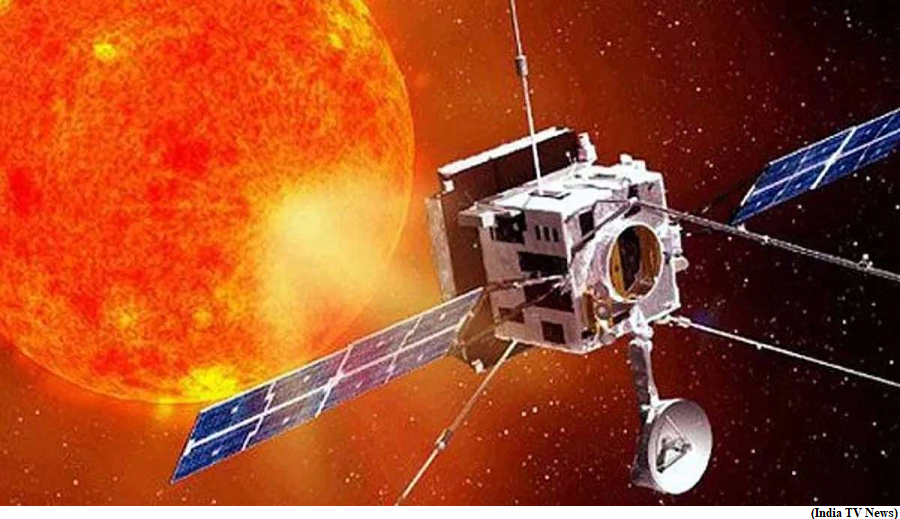Aditya L1 Papa detects first solar wind impact from the Sun (GS Paper 3, Science and Technology)

Why in news?
- The Plasma Analyser Package for Aditya (PAPA) payload onboard the Aditya-L1 has detected the solar wind impact of Coronal Mass Ejections (CMEs) including those that occurred during February 10-11.
Details:
- The PAPA payload has been operational and is performing nominally fulfilling its desired role.
- Earlier the Coronal Mass Ejections (CMEs) occurred on December 12, 2023, which was a single event.
About PAPA Payload:
- PAPA is an energy and mass analyser designed for in-situ measurements of solar wind electrons and ions in the low energy range.
- It has two sensors: the Solar Wind Electron Energy Probe (SWEEP, measuring electrons in the energy range of 10 eV to 3 keV) and the Solar Wind Ion Composition Analyser (SWICAR, measuring ions in the energy range of 10 eV to 25 keV and mass range of 1-60 amu).
- The PAPA payload is developed by the Space Physics Laboratory and Avionics Entity of the Vikram Sarabhai Space Centre (VSSC)/ISRO.
About Aditya-L1:
- Aditya-L1 was launched by ISRO on September 2, 2023, with the mission of observing and helping better understand the Sun.
- It arrives at its destination, L1 or the first Sun-Earth Lagrangian point, on January 6.
Objectives:
- Understanding Coronal Heating and Solar Wind Acceleration.
- Understanding initiation of Coronal Mass Ejection (CME), solar flares and near-earth space weather.
- Understanding coupling and dynamics of the solar atmosphere.
- Understanding solar wind distribution and temperature anisotropy.
World race to eradicate Guinea worm disease nears the finish line
(GS Paper 2, Health)
Why in news?
- The world is on the brink of a public health triumph as it closes in on eradicating Guinea worm disease.
- There were more than 3.5 million cases of this disease in the 1980s, but according to the World Health Organization’s (WHO) weekly epidemiological report, they dwindled to 14 cases in 2021, 13 in 2022, and just six in 2023.

Guinea worm disease:
- Guinea worm disease, also called dracunculiasis, is the work of the Guinea worm (Dracunculus medinensis), whose infamy dates back to biblical times, when it was called the “fiery serpent” and whose presence researchers have confirmed in Egyptian mummies.
- Individuals whose bodies the worm has entered first experience a painful blister, usually on a lower limb. When seeking relief, they may immerse the affected area in water, which prompts the worm to emerge and release hundreds of thousands of larvae, potentially contaminating communal water sources and perpetuating the infection cycle.
- While a worm by itself is not lethal, it debilitates those whom it infects and prevents them from earning their livelihoods.
- It manifests as a painful skin lesion as the adult worm, sometimes up to a meter long emerges. This process, which can last weeks, often begins with a blister and develops into an ulcer from which the worm slowly exits the body.
- The symptoms involve intense pain, swelling, and sometimes secondary bacterial infections at the wound. Victims may experience fever, nausea, and vomiting.
Affected area:
- More than 90% of Guinea worm infections manifest in the legs and feet.
- The individual has an excruciating experience when the adult female worm emerges through the skin. The open sore left by its exit is also susceptible to secondary infections. The disease affects people of both sexes.
- The disease thrive where access to safe drinking water is a luxury, and health education and resources are scant.
Status in India:
- India eliminated Guinea worm disease in the 1990s, through a rigorous campaign of surveillance, water safety interventions, and education.
- The government of India received Guinea worm disease-free certification from the WHO in 2000.
- This accomplishment was the result of a collaboration between the Indian government, local health workers, and international partners.
Current status:
- The WHO recorded only six cases of Guinea worm disease in 2023.
- Nations like South Sudan and Mali have made commendable progress, although the fight continues in Chad and the Central African Republic.
Way Forward:
- In 2020, researchers also discovered Guinea worms in animal reservoirs, particularly dogs, in Chad, casting a shadow of complexity over the final stages of eradication.
- This development is a crucial reminder of the disease’s tenacity and, importantly, signals to countries where the disease was previously endemic, including India, to not let their guard down.



